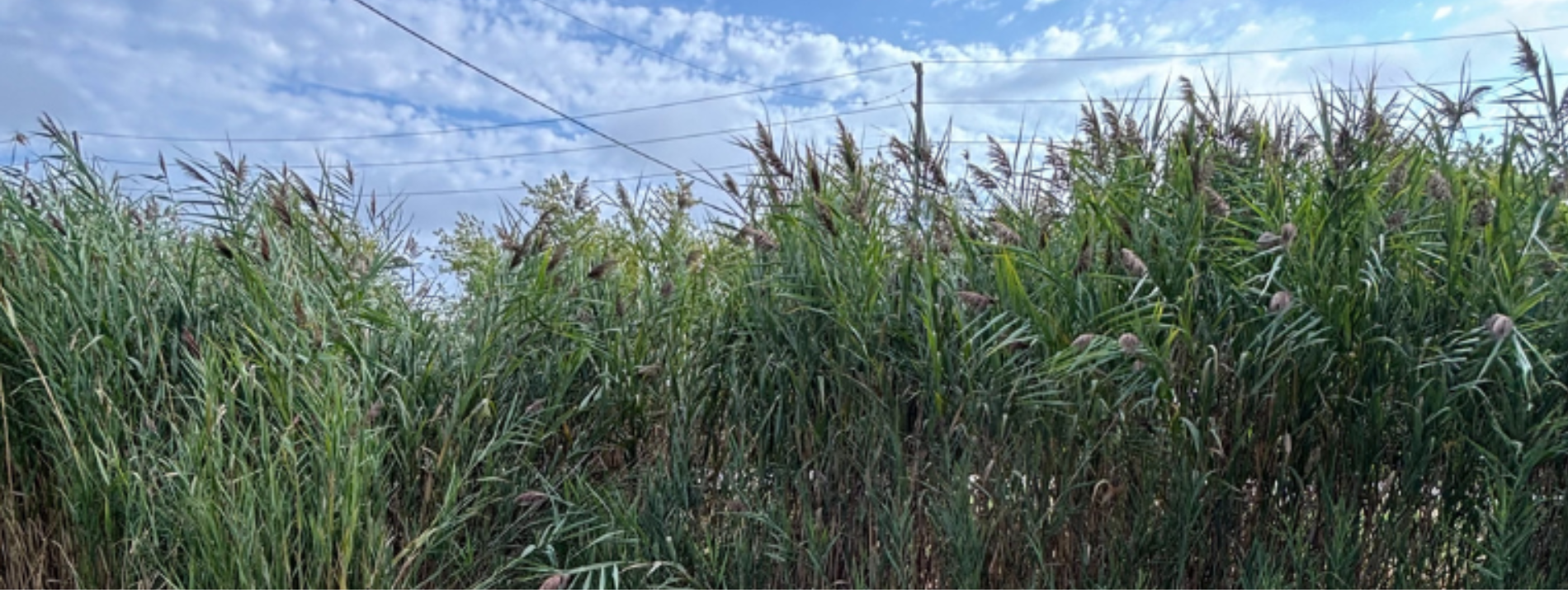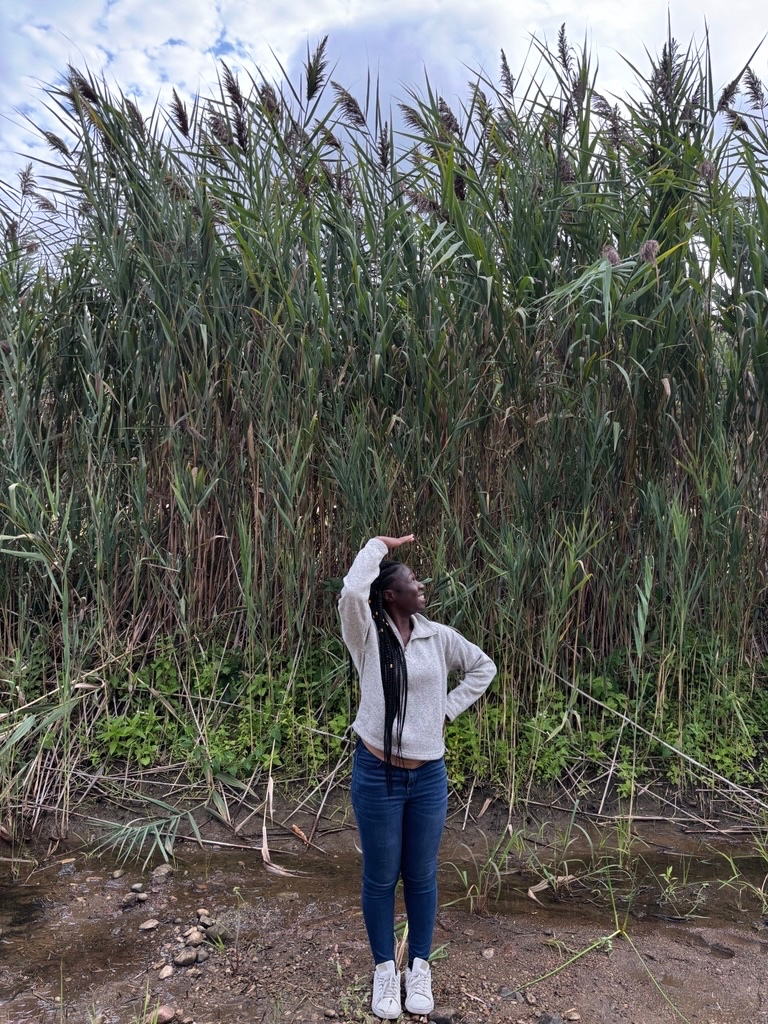“Reed” all about it: How we’re battling invasive Phragmites for natural spaces

What’s taller than a Durham Region Transit bus, spreads quickly, kills important species and is threatening our natural spaces across not only our province, but also Durham Region? No, it’s not a supervillain – it’s invasive Phragmites. But what is it, and what are we doing to stop it?
What is invasive Phragmites?
Invasive Phragmites is an invasive species of perennial grass that spreads quickly and aggressively, releasing toxins from its roots into the soil to hinder the growth and ultimately kill surrounding plants.
“Once you learn what invasive Phragmites look like, you’ll start seeing it everywhere,” says Dave, a Regional Works Department GIS supervisor for the Infrastructure Analytics division. He’s part of the team involved with tackling this tall, aggressive reed. “It’s both surprising and concerning to see how quickly invasive Phragmites can take over wetlands and natural spaces in our own communities.”
Quick facts
- Invasive Phragmites can grow between four to five metres (or 15 to 20 feet) tall; to compare, that’s taller than a giraffe or your average streetlamp pole!
- They can grow at a rate of about four centimetres (or 1.6 inches) each day.
- The stems grow very dense, with up to 200 stems per square metre.
- These plants are different from the native species of Phragmites (called Phragmites americanus); they look similar, but the native Phragmites don’t have the same negative impacts on the ecosystem.

Check this out – this picture shows just how tall invasive Phragmites can be compared to a person!
How invasive Phragmites impact our lives
If you’ve ever visited one of our wetlands in Durham Region, like the Oshawa Creek or Duffins Creek marshes, you’ll have seen the abundance of different plants and wildlife that makes these natural spaces so beautiful.
Unfortunately, with invasive Phragmites, these natural spaces are at risk. Invasive Phragmites crowd out the native plants, stealing vital resources like water and reducing the variety of plants in these spaces. This can be devastating not only to the plant populations, but also to the wildlife, including species at risk, that rely on these native plants for food or their habitat. For our teams on the ground, it’s a daily challenge to manage these impacts and restore balance.
And it’s not just our plants and wildlife that can be affected. Invasive Phragmites can also have negative impacts on properties as well, as it can cause flooding and reduce property value. Invasive Phragmites can also cause safety risks. For instance, the dead stands of invasive Phragmites, which are dry and combustible, increases the risk of fires. For Regional road crews, tall invasive Phragmites can cause road safety issues by blocking out sightlines.
So, what are we doing to manage invasive Phragmites?
Battling invasive Phragmites requires planning, collaboration and resources.
“Invasive Phragmites don’t stop at jurisdictional boundaries,” says Dave. “So, it’s important for us to work together with our partners. By sharing resources, we will be able to map invasive Phragmites within the Region and come up with a plan to manage it, protecting our vital natural spaces.”
To help, we received a one-time grant of $45,000 through the Invasive Phragmites Control (IPCF) – part of the Ontario Phragmites Action Program.
We’re also working in collaboration with local area municipalities, conservation authorities, environmental groups and other partners as part of the Durham Joint Phragmites Working Group to finalize a plan that will guide collaborative, practical and long-term management of invasive Phragmites across Durham Region.
Interested in learning more?
We recommend visiting OntarioPhragmitesAction.ca to learn about the collaborative work happening at the Ontario Phragmites Action program.
Contact Us




